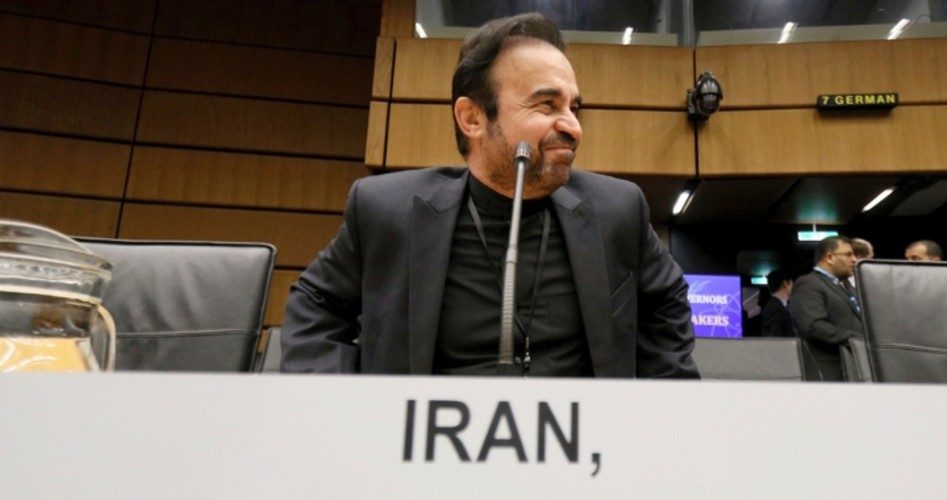
On Tuesday, Iran notified the International Atomic Energy Agency (IAEA) that it has opened a new nuclear enrichment facility at Natanz in the center of the country. The announcement was made one month after President Trump announced that the United States was withdrawing from the Joint Comprehensive Plan of Action (JCPOA), more commonly known as the Iran Nuclear Deal, and less than six weeks after Israel’s Benjamin Netanyahu detailed Iran’s alleged deception and circumvention of the deal.
According to Ali Akbar Salehi, the head of Iran’s Atomic Energy organization, the new facility will produce so-called old-generation centrifuges. Salehi believes the first of the new centrifuges will be finished in a month.
Centrifuges are needed to enrich uranium into nuclear fuel that can be used for nuclear energy — or bomb-making. Reportedly, the old-generation centrifuges that Iran has are able to produce only fuel for civilian reactors and not weapons-grade uranium.
The European Union, which is trying to save the JCPOA, voiced its displeasure at the development but stopped short of accusing Iran of breaking the deal. “Following a first assessment, the announced steps, per se, are not a violation of the JCPOA,” said Maja Kocijancic, a spokeswoman for Federica Mogherini, the EU’s top diplomat. “However, at this critical juncture, they [Iran] will not contribute to build confidence in the nature of the Iranian nuclear program.”
Earlier in the day, Iranian Ambassador to the IAEA Reza Najafi (shown) told journalists that Iran was giving European nations “a few weeks” to find a way to save the deal after America’s withdrawal.
“These are the preparatory works for a possible scenario if in an unfortunate situation the [nuclear deal] fails, then Iran can restart its activities without any limits,” Najafi said. “What I can say right now, the negotiations at the expert level are continuing and we hope that it could reach some conclusion. Until then, we continue to exercise the most restraint but it is not [an] endless process.”
{modulepos inner_text_ad}
As the Iran Nuclear Deal falls quickly apart, it’s worth noting how terribly flawed it was in the first place. On April 30, Benjamin Netanyahu detailed the many ways in which, according to him, Iran was moving forward with its plan to acquire nuclear weapons. Israeli intelligence claims that it obtained 55,000 pages and 183 CDs documenting files, charts and blueprints, which allegedly show that Iran was working to design, build, and test nuclear weapons, even though Iranian leaders denied it repeatedly.
“Iran lied. Big time,” said Netanyahu. After signing the nuclear deal in 2015, “Iran intensified its efforts to hide its secret nuclear files. In 2017, Iran moved its nuclear weapons files to a highly secret location in Tehran.”
A related story details the lengths to which the Obama administration was willing to go in order to secure the Iran Deal. The Obama administration granted Iran a temporary license to access the United States’ financial system in February of 2016. This happened after government officials testified to Congress that Iran would never be allowed such access.
“The Obama Administration, during the negotiation of the Iran deal, misled the Americans,” declared Rob Portman (R-Ohio), the chairman of the Senate’s Permanent Subcommittee on Investigations. “I think they did so because they were desperate to get a deal.”
Indeed. President Obama was more concerned about legacy building than getting an actual substantive agreement on Iranian nuclear proliferation. He lied about key provisions of the agreement in order to get it past Congress.
And what does it say about the JCPOA that, just one month after the U.S. withdrawal from the agreement, it can start up a new centrifuge facility?
Benjamin Netanyahu summed it up well: “The Iran Nuclear Deal is based on lies. It’s based on Iranian lies and Iranian deception.” He might have added that it was also based on President Obama’s lies and deception.
Photo: AP Images




